|
|
Shadows of Old
|
|
|
|
Shadows of Old
|
|
|
Go to Route 66 State: |
||
*UPDATED 28 JANUARY 2007* |
The Route 66 Primer: A Brief History |
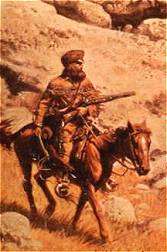 |
Route 66 & the National Old Trails Highway The story of Route 66 starts over a century earlier when a young country began to grow westward. The vast unexplored lands beyond the Mississippi River fired the imagination of the American people. The seemingly limitless resources beckoned to a nation on the move. The mountain men themselves, in an effort to leave the settled east behind, inadvertently opened up the unspoiled west to the westward expansion of a nation by their explorations. There were no established trails but the ones the mountain men blazed themselves as they followed the beaver along the traces left by the Native Americans. These old trails, blazed by the mountain men, were generally all that existed for the immigrant wagon trains that followed shortly after. The trails were general courses, where wagons would spread out over a wide area, following a single track only where landforms forced them to. |
| With the gold rush of 1849, thousands of people sought routes to California, publicizing the area in an unprecedented way. The west was being opened and from trails such as the Santa Fe Trail, Jedediah Smith’s route across the Mojave Desert to San Bernardino and Beale’s Wagon Road across New Mexico and Arizona a transportation corridor began to emerge. The railroads would follow this corridor a few years later further establishing routes west that would someday become a part of Route 66. The railroad also provided new routes for wagon travel, and wagons increasingly followed alongside the tracks. |
|
|||
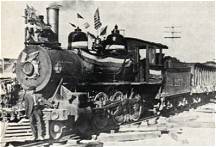 |
Because train engines were limited in the terrain they could cross, railroad routes were painstakingly chosen. The railroad had to follow the contours of the land, avoiding steep grades. The railroad also had to connect sources of water, as the steam engines of those days required substantial water. As a result, the route was far easier and more gradual than earlier wagon roads had been. Wagon travelers (and, later, motorists) following alongside the rail tracks could find water and get help in emergencies. Many of the sidings and water stops became communities that would survive into the highway era. | |||
| The advent of the automobile changed the face of America forever. The arrival of Ford’s Model T in 1908 had a dramatic effect on the American populace, as automobiles became accessible to the common man. The automobile provided a new economic base never seen before. Now Americans began to travel. No longer were they confined to the short distances that a horse could travel in a day. Journeys that would take many days on horseback or wagon now took a mere few hours. |
|
|||
| With the introduction of the automobile, new businesses sprang up to provide services for the burgeoning tourist industry. The American Dream was about to undergo a profound change, a change we still experience today. Travel by automobile was hard in the early days though. The roads weren’t designed for the horseless carriage. Dirt roads were little better than local trails designed for travel by horseback. Roads would have to improve before the automobile could open up the vast corners of our country. By 1917 only 2 percent of the nation’s roads were paved. Most roads were unimproved earth, although some were graded, graveled, or both. | ||||
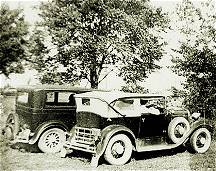 |
Trail organizations were started to address these problems. These were local groups that promoted the roads around the towns where they lived. There was no real national cohesion at this time. Local groups did what they pretty much wanted to in their own area. The lack of any national highway group led to a confusing array of maps and road guides. No two maps were alike. Each guide reflected the organization that had produced it. There was no correlation between early trail associations and maps often overlapped. Road maps were limited to the general area or state that the trail organization hailed from. Furthermore the use of highway symbols and color schemes was not standardized. Navigating from town to town and state to state was very confusing. By the 1920s the public was confused and disgusted. The cry for a standardized National Highway System was louder than ever before. | |||
| The government knew that something would have to be done about the poor road system in America. The Federal Government finally stepped in and made a concerted effort to bring the various trail organizations and automobile groups together. In 1921, an amendment to the Federal Aid Road Act was passed, requiring states to designate primary roads to be included in a state highway system. These roads would be designated U.S. highways. | ||||
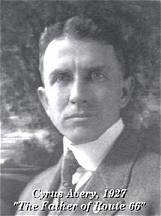 |
Cyrus Avery was a successful businessman from Oklahoma that wanted to improve road conditions in his state. Avery, now known to many as the father of Route 66, was charged with establishing what would become the U.S. highway system, by plotting and mapping the most-important interstate roads in the nation. The Associated Highways of America developed a plan for the nation’s highways. They laid out a highway system, organized a maintenance plan for those highways, established a systematic numbering system that replaced the previous tradition of naming roads (Lincoln Highway, National Old Trails Road, etc.) and a system of standardized, uniform directional, warning, and regulatory signs for the U.S. highway system. Cyrus Avery became one of the strongest supporters of the Chicago to Los Angeles route, a route that he wanted to pass through his home state of Oklahoma. | |||
| Supporters of the major east to west route from Chicago to Los Angeles wanted to follow the Old Santa Fe Trail, which would by pass Oklahoma. This road would be linked with the Old Santa Fe Trail across the Southwest, which would then be connected to Beale’s wagon route through California to form the National Old Trails Road. Avery knew that a major highway through Oklahoma would boost that state’s economy so he relentlessly pushed for an alternate route. Cyrus Avery used a little known trail from the California Gold Rush that ran through Oklahoma, as he drew plans for the route that would become Route 66. He was successful in his bid to have the new route pass through his home state. This route was designated U.S. Highway 66. On November 11, 1926 a bill was signed in Washington creating the American Highway System. Route 66 along with the rest of the early two-lane roads became a reality. Our country had entered a new era. The great roads were to be built. Roads to carry a nation on the move, through hard times, war, and rebirth. Route 66 would become the most celebrated and famous of these two-lanes. Route 66 was about to become the "Main Street of America." |
|
|||
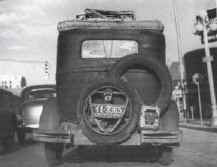 |
Route 66 has held a special place in the American consciousness from its beginning. The road is uniquely American. There are a thousand stories of hope, heartbreak, love, hate, starting over, and new dreams found along the next bend of the highway we call the Mother Road. The story of Route 66 is our story; it embodies what makes us a great nation. No other culture has had the same type of love affair with the automobile, and few have had the wide-open spaces offered by the American West. | |
| The 2,400-mile route winds from Jackson Boulevard and Michigan Avenue in Chicago to Los Angeles, through the most romantic and celebrated portions of the American West. Route 66 was a lifeline through much of America, connecting the small midwestern towns of Illinois, Missouri, and Kansas, with the big cities of Los Angeles and Chicago. | ||
| Route 66 is the National Old Trails Highway. On November 11, 1926 Route 66 was born. It followed the old trails laid out by the early explorers and railroad. Route 66 became the twentieth century version of the Oregon Trail, the golden road to the promised land and has inspired our spirit ever since. John Steinbeck called it the Mother Road, and indeed it was. It provided hope to the farmers of the dust bowl era going west to find a new life. It served our country well during time of war. In optimistic post W.W.II America, Route 66 defined a generation looking for adventure and freedom on the open road. To understand the history of Route 66 is to understand a little bit about ourselves, where we came from and where we hope to go in the future. |
|
|
Experience the Mother Road yourself; take a journey down the highway of dreams. This is her story, which really is our story after all. Maybe the times weren't actually simpler back then, but it sure does seem so sometimes in our modern world. |
|
~ click on any Route 66 state to begin your tour ~ |
||
California |
Illinois |
|
|
NAVIGATION NOTE: You can click on any Route 66 State or the East or West Route 66 shields to start your "travels" on the Mother Road in either direction. Pages will open to the particular state you choose, from there you will find an interactive state map. Drive your mouse along Route 66 by clicking on the map anywhere along the Mother Road to go to that area of Route 66. Route 66 is traditionally thought of as a east to west highway, the route from Chicago to LA. This web site is set up like that, as if you were going west on Route 66. But of course you can go anywhere and in any direction your heart desires. Have Fun! Now you can take a complete cyber tour of Route 66 from Chicago, Illinois to Santa Monica, California! You can travel "Cyber 66" from start to finish ~ in either direction no less from the comfort of your own home. |
||
Special Thanks: It took only four years, two cars, 33.75 thermoses of coffee, untold Snicker bars, 457 Tums, and 4566 photographs to complete this cyber tour of Route 66! What started out as a photographic journey to capture images along what I thought was a vanished road in Arizona and California expanded to encompass all of Route 66. What I found along the way has changed my life forever. Though Route 66 is no longer a US highway, it is far from being the lost and vanished road I once imagined it was. Route 66 is alive today and along her winding cracked pavement I discovered America. It was the America of my parents and grandparents, an America that I thought had been lost to us. The people of the Mother Road proved otherwise. It's the people of Route 66, those that live, work and play along her corridor today that keep her alive. To those people I want to say thank you. None of this would have been possible without the help of you - the special people I met along the way. To the business people on Route 66 trying to eke out a living away from the Interstate, the historians, the authors and artists who can see the bigger picture, dedicated volunteers and preservationists that strive to preserve this part of America for our children, the Route 66 State Associations and Organizations who know that to lose Route 66 would be to lose a part of our American soul, and above all, you road wanderers that take the path less traveled and know that it's not the destination but the journey that counts - I owe all of you more than you could possibly know. Once you were strangers on a highway and the Mother Road brought us together as friends. To you then and all Road Wanderers I dedicate these pages. God Bless You All!
~ Guy Randall
24 January 2004
|
One of the most exciting things to happen on Route 66 in a long time! Through the support of Hampton® Hotels Save A Landmark program I accompanied Jim Conkle of the California Route 66 Preservation Foundation on a 66 day journey of Route 66 from Santa Monica to Chicago that started on April 29th, 2003. I chronicled our adventures (some would say misadventures) down the Mother Road and posted a day by day account of our journey on the Route 66 Caravan web site. Catch the whole adventure here! Be prepared, there are 100 pages to peruse as this web site has become an online book. |
Comments? Don't be shy now! I'd love to hear from you. You can contact me at:
|
How about your own web site? I design web pages for business and personal use alike. To find out more ... |
 |
Take a virtual tour of my N scale model railroad layout of a 1950's Rocky Mountain mining town. Check it out ... |
 |
 Next | Previous | SkipNext | Email Ring Contact | | Prev5 | Next5 | Random | Index | Join Ring ] |
© Copyright 2001 - GRandall Web Design